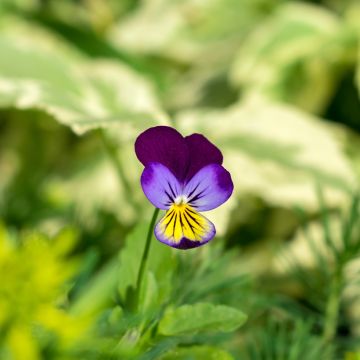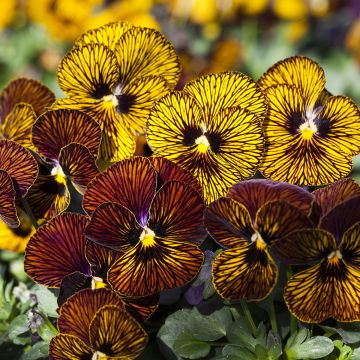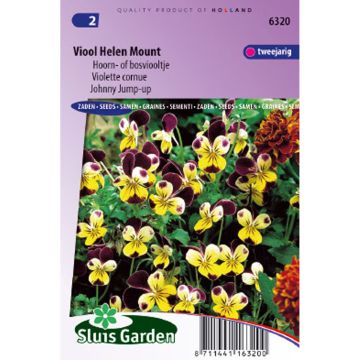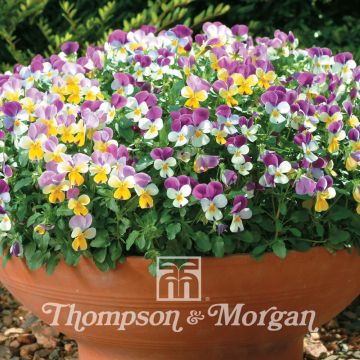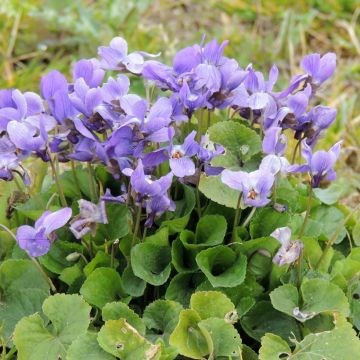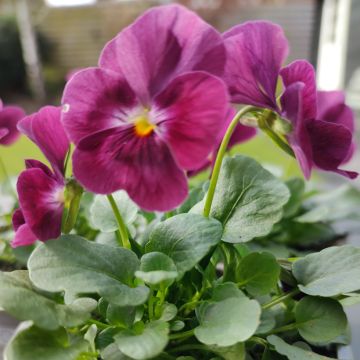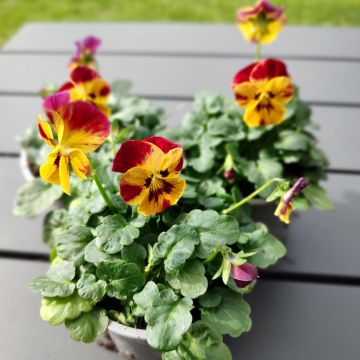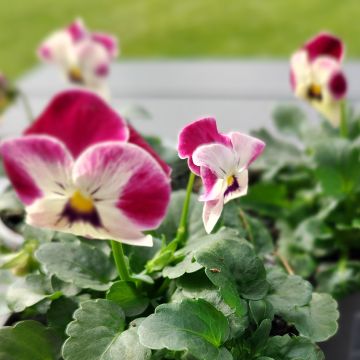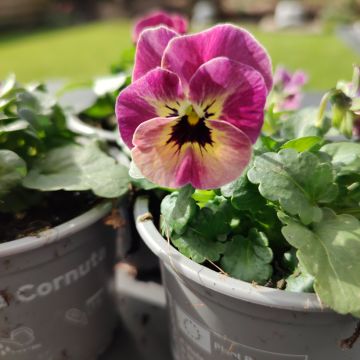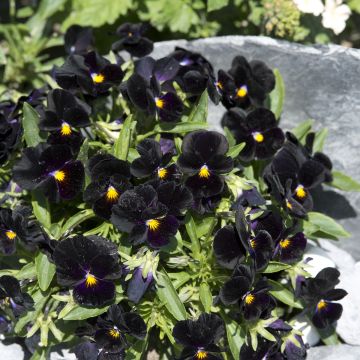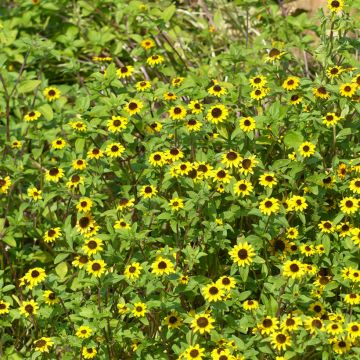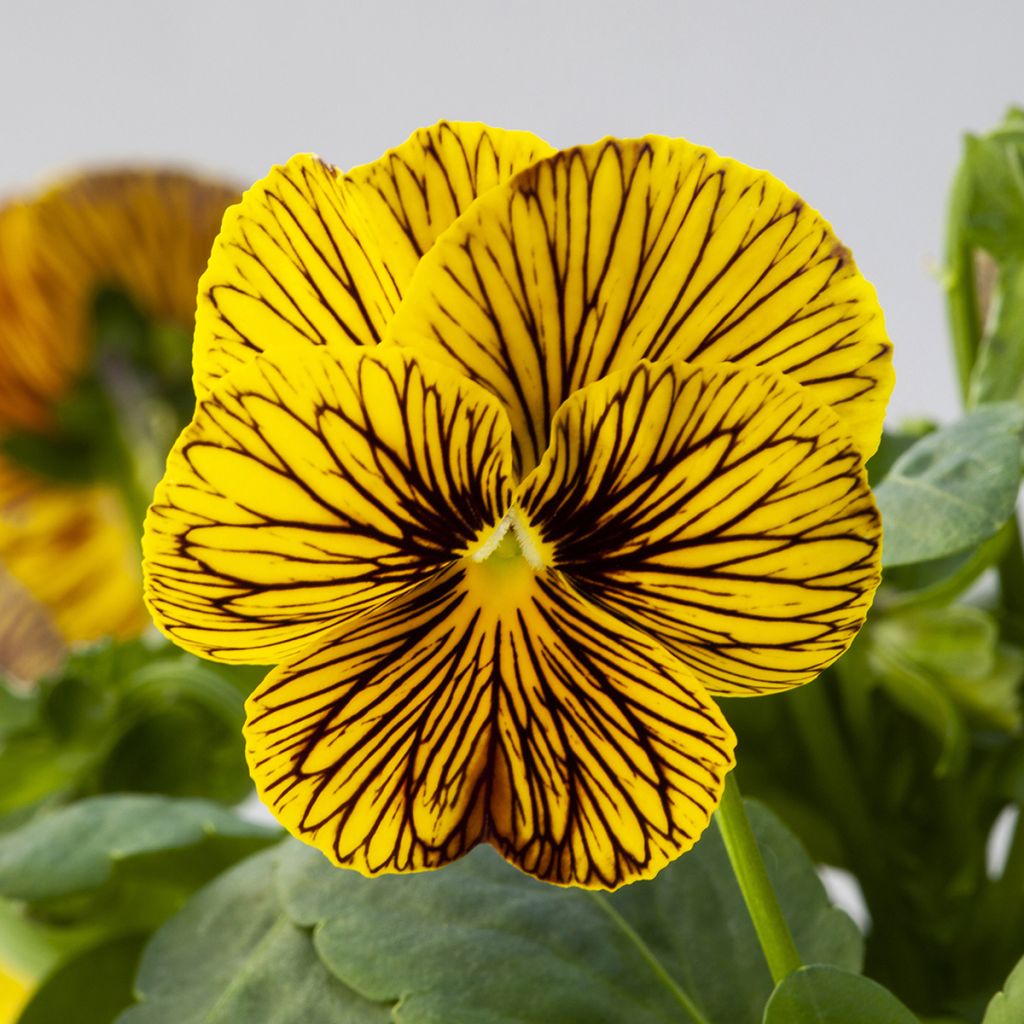

Viola Tiger Eye Yellow Seeds - Horned Pansy
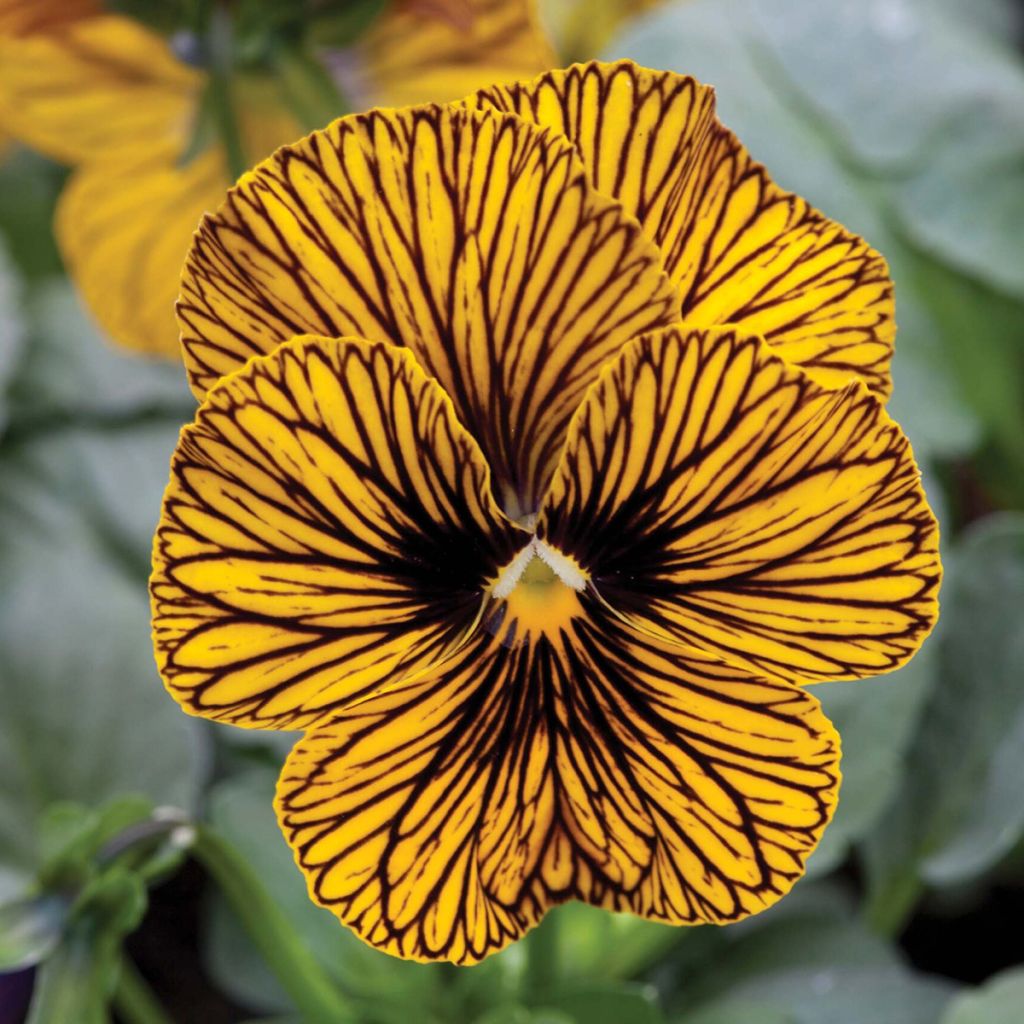

Viola Tiger Eye Yellow Seeds - Horned Pansy
Viola Tiger Eye Yellow Seeds - Horned Pansy
Viola cornuta Tiger Eye Yellow
Horned Pansy, Horned Violet
Special offer!
Receive a €20 voucher for any order over €90 (excluding delivery costs, credit notes, and plastic-free options)!
1- Add your favorite plants to your cart.
2- Once you have reached €90, confirm your order (you can even choose the delivery date!).
3- As soon as your order is shipped, you will receive an email containing your voucher code, valid for 3 months (90 days).
Your voucher is unique and can only be used once, for any order with a minimum value of €20, excluding delivery costs.
Can be combined with other current offers, non-divisible and non-refundable.
Home or relay delivery (depending on size and destination)
Schedule delivery date,
and select date in basket
This plant carries a 6 months recovery warranty
More information
We guarantee the quality of our plants for a full growing cycle, and will replace at our expense any plant that fails to recover under normal climatic and planting conditions.
Would this plant suit my garden?
Set up your Plantfit profile →
Description
Viola 'Tiger Eye Yellow', also known as the Horned Violet, belongs to a new generation of highly performing hybrids that form a small clump of flowers with a dazzling pattern, in saffron yellow veined with mahogany brown on all the petals. It accompanies spring bulbs and autumn asters in the garden and creates beautiful pot compositions. This small biennial plant is cultivated in humus-bearing soil, in partial shade or dappled sunlight, where it spreads its carpet of dark and evergreen foliage.
Belonging to the violet family, the horned violet is a low perennial plant that has given rise to numerous hybrids, the most famous of which are horticultural pansies. The variety 'Tiger Eye Yellow', from which it originates, is a spreading herbaceous plant that reaches a height of 10 to 15 cm when in bloom, with dark green, ovate and crenate persistent leaves forming a spreading clump. Depending on the sowing date, this plant is covered in flowers from spring to autumn. Its saffron yellow flowers with tiny mahogany hearts are quite large and well-rounded, resembling pansies, but with a different arrangement of petals. The two upper petals are upright, while the other three are inclined downwards. It spreads quite rapidly thanks to its rhizomes and also self-seeds easily in the garden.
Horned violets can be planted in borders, shaded rockeries, as foreground plants in low flower beds, as well as in pots and containers on balconies and terraces. They can be paired with other low, spring plants such as Forget-me-nots, Primroses, Botanical Tulips, Daisies, and small Daffodils. In autumn, they accompany the flowering of Asters.
The flowers of horned violets are edible, so you can decorate your dishes with one or two flowers, or even add some to your salads to give them a touch of colour.
Report an error about the product description
Flowering
Foliage
Plant habit
Botanical data
Viola
cornuta
Tiger Eye Yellow
Violaceae
Horned Pansy, Horned Violet
Cultivar or hybrid
Other Violet seeds
View all →Planting and care
Sow the horned violet from July to September, then transplant the young plants into a pot. Plant out your young plants in October before the first frost, spacing them 20 cm apart, in open ground.
Second option: sow under shelter at the end of winter and plant in open ground at the end of spring. Germination takes about 15 days at 16°C. Use a compound mixture of 1/3 compost, 1/3 garden soil, and 1/3 river sand. It takes about 15 days for the seedlings to appear. Watch out for attacks from snails and slugs, which are fond of these young plants. Removing faded flowers will promote the renewal of flowering. Horned violets appreciate a light, humus-rich, moist, but well-drained soil, as they dislike excessive moisture in winter. In heavy soil, add a little sand to improve drainage. Plant horned violets in a sunny, but not scorching position, or under light shade.
Sowing period
Intended location
Planting & care advice
This item has not been reviewed yet - be the first to leave a review about it.
Similar products
Haven't found what you were looking for?
Hardiness is the lowest winter temperature a plant can endure without suffering serious damage or even dying. However, hardiness is affected by location (a sheltered area, such as a patio), protection (winter cover) and soil type (hardiness is improved by well-drained soil).

Photo Sharing Terms & Conditions
In order to encourage gardeners to interact and share their experiences, Promesse de fleurs offers various media enabling content to be uploaded onto its Site - in particular via the ‘Photo sharing’ module.
The User agrees to refrain from:
- Posting any content that is illegal, prejudicial, insulting, racist, inciteful to hatred, revisionist, contrary to public decency, that infringes on privacy or on the privacy rights of third parties, in particular the publicity rights of persons and goods, intellectual property rights, or the right to privacy.
- Submitting content on behalf of a third party;
- Impersonate the identity of a third party and/or publish any personal information about a third party;
In general, the User undertakes to refrain from any unethical behaviour.
All Content (in particular text, comments, files, images, photos, videos, creative works, etc.), which may be subject to property or intellectual property rights, image or other private rights, shall remain the property of the User, subject to the limited rights granted by the terms of the licence granted by Promesse de fleurs as stated below. Users are at liberty to publish or not to publish such Content on the Site, notably via the ‘Photo Sharing’ facility, and accept that this Content shall be made public and freely accessible, notably on the Internet.
Users further acknowledge, undertake to have ,and guarantee that they hold all necessary rights and permissions to publish such material on the Site, in particular with regard to the legislation in force pertaining to any privacy, property, intellectual property, image, or contractual rights, or rights of any other nature. By publishing such Content on the Site, Users acknowledge accepting full liability as publishers of the Content within the meaning of the law, and grant Promesse de fleurs, free of charge, an inclusive, worldwide licence for the said Content for the entire duration of its publication, including all reproduction, representation, up/downloading, displaying, performing, transmission, and storage rights.
Users also grant permission for their name to be linked to the Content and accept that this link may not always be made available.
By engaging in posting material, Users consent to their Content becoming automatically accessible on the Internet, in particular on other sites and/or blogs and/or web pages of the Promesse de fleurs site, including in particular social pages and the Promesse de fleurs catalogue.
Users may secure the removal of entrusted content free of charge by issuing a simple request via our contact form.
The flowering period indicated on our website applies to countries and regions located in USDA zone 8 (France, the United Kingdom, Ireland, the Netherlands, etc.)
It will vary according to where you live:
- In zones 9 to 10 (Italy, Spain, Greece, etc.), flowering will occur about 2 to 4 weeks earlier.
- In zones 6 to 7 (Germany, Poland, Slovenia, and lower mountainous regions), flowering will be delayed by 2 to 3 weeks.
- In zone 5 (Central Europe, Scandinavia), blooming will be delayed by 3 to 5 weeks.
In temperate climates, pruning of spring-flowering shrubs (forsythia, spireas, etc.) should be done just after flowering.
Pruning of summer-flowering shrubs (Indian Lilac, Perovskia, etc.) can be done in winter or spring.
In cold regions as well as with frost-sensitive plants, avoid pruning too early when severe frosts may still occur.
The planting period indicated on our website applies to countries and regions located in USDA zone 8 (France, United Kingdom, Ireland, Netherlands).
It will vary according to where you live:
- In Mediterranean zones (Marseille, Madrid, Milan, etc.), autumn and winter are the best planting periods.
- In continental zones (Strasbourg, Munich, Vienna, etc.), delay planting by 2 to 3 weeks in spring and bring it forward by 2 to 4 weeks in autumn.
- In mountainous regions (the Alps, Pyrenees, Carpathians, etc.), it is best to plant in late spring (May-June) or late summer (August-September).
The harvesting period indicated on our website applies to countries and regions in USDA zone 8 (France, England, Ireland, the Netherlands).
In colder areas (Scandinavia, Poland, Austria...) fruit and vegetable harvests are likely to be delayed by 3-4 weeks.
In warmer areas (Italy, Spain, Greece, etc.), harvesting will probably take place earlier, depending on weather conditions.
The sowing periods indicated on our website apply to countries and regions within USDA Zone 8 (France, UK, Ireland, Netherlands).
In colder areas (Scandinavia, Poland, Austria...), delay any outdoor sowing by 3-4 weeks, or sow under glass.
In warmer climes (Italy, Spain, Greece, etc.), bring outdoor sowing forward by a few weeks.






























